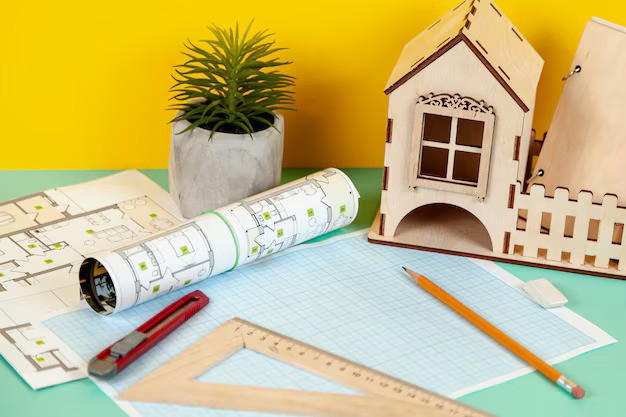Re-Imagining House Extensions with Architectural Design

When you think about extending your home, the possibilities are endless. Whether you’re dreaming of a sunlit conservatory, a spacious kitchen, or an extra bedroom, architectural design plays a pivotal role in bringing your vision to life. It’s not just about adding space; it’s about enhancing the flow, functionality, and aesthetic of your home.
In the UK, house extensions have become increasingly popular as homeowners look to maximise their living space without the hassle of moving. With the right architectural design, you can seamlessly blend the old with the new, creating a cohesive and stylish living environment. But where do you start? Understanding the principles of good design and the latest trends can make all the difference in achieving a successful extension.
Importance Of Architectural Design For House Extensions
When considering a house extension, architectural design is a crucial element. This step isn’t just about adding space. It also involves creating harmony between the new and existing structures. So, why is this design phase so essential?
Enhancing Aesthetic Appeal
Would you want an extension that looks like an afterthought? Thoughtful architectural design ensures your new space blends seamlessly with your existing home. Shouldn’t the extension feel like it was always part of your house? Skilled architects use their expertise to match materials, colours and styles. This way, the new space enhances the overall aesthetic appeal of your home.
Increasing Property Value
Have you thought about resale value? A well-designed house extension might significantly boost your property’s market value. Who wouldn’t want a home with character and additional space? Prospective buyers often look for elements like natural light, functional layouts and modern amenities. Architectural design considers these aspects, making your home more attractive to future buyers.
Optimising Functionality
How do you plan to use the new space? Whether it’s a kitchen, living room or extra bedroom, functionality should be at the forefront. Architectural design focuses on making the space as useful as possible. Does a poorly planned extension work for you? Architects plan layouts that maximise light, ensure good flow and incorporate essential features.
Adhering To Building Regulations
Did you know that house extensions must meet specific building regulations? Complying with these rules ensures safety and legality. Architects know these regulations and integrate them into the design. Ever thought of the complexities involved in meeting these standards? Their expertise saves you time and prevents costly mistakes down the line.
Customising To Your Needs
What are your unique needs? Architectural design tailors your extension to suit your lifestyle. Would you prefer a minimalist design or one with lots of intricate details? An architect works closely with you, translating your vision into reality. This personalised approach ensures your extension fits your needs perfectly.
Managing Environmental Impact
Do you consider the environmental impact of your extension? Sustainable architectural design minimises your project’s carbon footprint. Are energy-efficient features important to you? Architects select materials and designs that promote energy efficiency and reduce waste.
By focusing on these core elements, architectural design ensures your house extension is more than just extra space. It becomes a valuable, functional and aesthetically pleasing addition to your home.
Key Considerations In Architectural Design For House Extensions
Budget And Cost Estimations
Considering cost serves as the cornerstone of your project. Begin by setting a realistic budget. Identify the financial limits and expected costs. Evaluate materials, labour, and additional unforeseen expenses. Consulting an experienced architect ensures the estimates align with your budget. Did you know that some unexpected costs, like structural issues, can derail your plan? Ensure your finances can handle surprises.
Planning Permission And Regulations
Figuring planning permission is a must. Local councils often have specific rules to follow. Contacting the local planning authority early can save headaches later. Building regulations ensure your extension is safe and legal. Complying with these requirements allows you to avoid fines or future legal issues. Does your area have listed building status? If so, more stringent regulations apply.
Design Harmony With Existing Structure
Achieving harmony with the existing structure enhances appeal and functionality. Use materials that echo the original design. Consider the form, texture, and colour in the new extension. Balancing old and new makes the extension feel cohesive rather than separate. Can you see how matching architectural styles elevate the space? Ensuring seamless integration transforms the extension into a natural part of your home.
Popular Architectural Styles For House Extensions
Thinking about extending your home? Understanding different architectural styles can help make your project a success. Let’s dive into some popular options.
Modern And Contemporary
Modern extensions feature clean lines and minimalistic designs. Flat roofs, large glass windows, and open spaces characterise this style. You might think about integrating tech elements for a smart home experience. Consider blending natural light with sleek interiors. This style suits those seeking a bold and innovative look. Have you considered how a modern extension can transform your living space?
Traditional And Heritage
Traditional extensions focus on retaining the classic look of the original structure. Period elements like gabled roofs, sash windows, and brick or stone facades are key. You can choose to integrate antiques or replica materials to maintain authenticity. This style often appeals to those valuing heritage and charm. Would your home benefit from a touch of timeless elegance?
Eco-Friendly And Sustainable
Eco-friendly extensions use sustainable materials and eco-conscious designs. Features include green roofs, solar panels, and energy-efficient systems. You might employ reclaimed wood or recycled materials in your design. This style fits those committed to reducing their carbon footprint. How can you incorporate sustainability while adding space to your home?
Engaging Professional Architectural Services
Hiring professional architectural services can transform your house extension project, ensuring beauty, functionality, and value. Expertise in design, regulations, and sustainability makes architects indispensable in creating your dream extension.
Benefits Of Hiring An Architect
Engage an architect, and you gain access to creative and technical expertise. Architects can bring innovative designs and efficient layouts, meeting all regulatory requirements. They manage project timelines, help with planning permissions, and source suitable materials. By communicating your vision, they convert ideas into practical plans, optimising space. Curious about how all this could enhance your extension? Architectural design in Swindon could be just who you need.
How To Choose The Right Architect
Finding the right architect can seem complex, yet this decision is crucial for your project’s success. Start by assessing their past projects, focusing on variety and style. Check qualifications and membership in professional bodies like RIBA for trustworthiness. Reading client testimonials offers insight into their reliability and creativity. Meeting several architects allows you to gauge compatibility and communication style. Wondering if they’ll understand your vision? A quick chat might reveal compatibility.
Common Challenges And Solutions
House extensions come with unique challenges. It’s essential to address these early to ensure the project runs smoothly.
Managing Space Constraints
Limited space might be a significant concern. You can turn tight areas into functional spaces with clever design. Think of multi-use furniture or integrated storage solutions. By using every nook, you can ensure the extension feels spacious. Consult an architect who might suggest solutions like loft conversions or side returns that maximise space without compromising aesthetics. By doing so, extensions can blend seamlessly with the existing home.
Addressing Structural Concerns
Structural integrity is crucial in house extensions. Extensions might need to support additional weight or new rooflines. Do existing foundations bear this load? Seek expert advice to assess the current structure. Engineers can evaluate and suggest necessary reinforcements. While it might seem daunting, addressing these concerns ensures a safe and lasting extension. Pilot holes and load-bearing walls might become key elements you need to consider. Planning and detailed evaluation minimise future risks.
Final Thoughts
Architectural design for house extensions is a multifaceted endeavour that demands careful planning and expert guidance. By considering factors like aesthetics, functionality, and compliance with regulations, you can enhance your home’s value and liveability. Selecting the right architectural style and professional services ensures a seamless blend with your existing structure. Addressing common challenges with innovative solutions and expert advice will help you achieve a successful and sustainable house extension. Embrace the journey with confidence, knowing that thoughtful design and professional expertise will transform your living space into a harmonious and functional haven.









